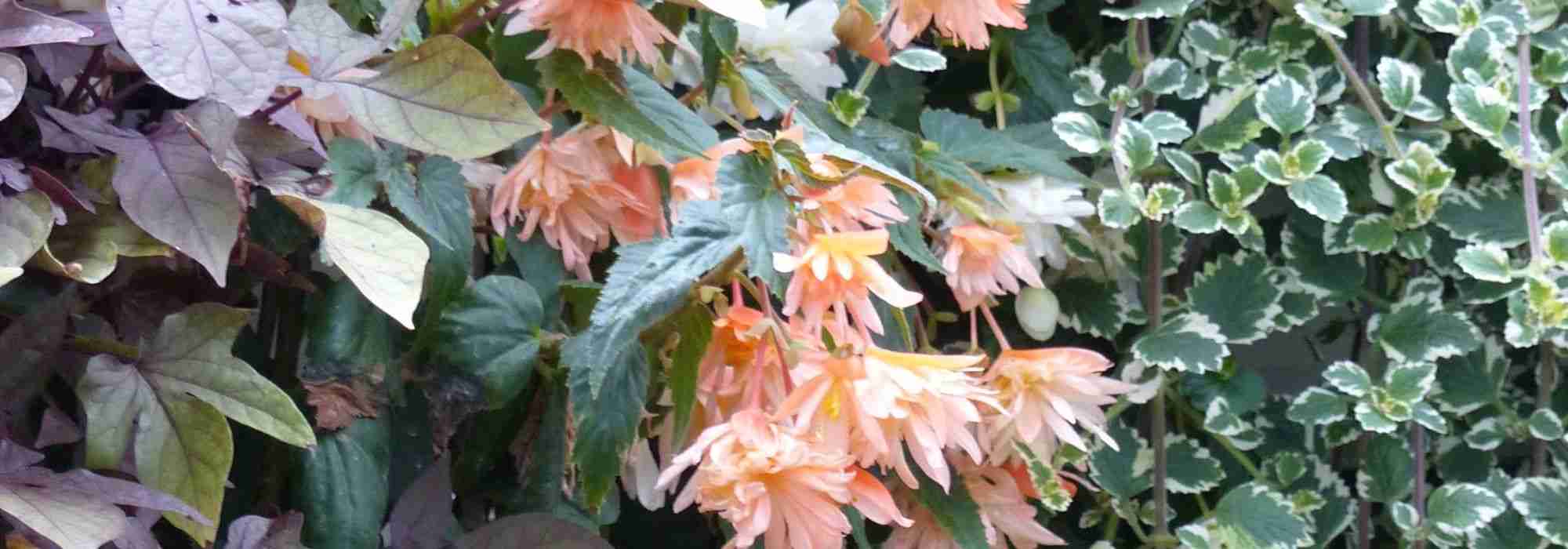
6 annuals or biennials for shade
Our selection of shade-loving flowers
Contents
To brighten a shady spot temporarily, nothing beats annuals or biennials! Their vibrant colours brighten beds, woodland understorey or shaded planters. Whether in a temporary garden or in a display of flowering pots or hanging baskets, these shade or part-shade flowers require regular watering and feeding. Note that most flowers that grow in shade can be grown indoors or outdoors provided they are brought in for winter. To find the right plant and make the right choice, discover our selection of shade-loving flowers.
Zanzibar Impatiens in Red and Yellow for an Exotic Ambience
Zanzibar Red and Yellow Impatiens is an annual shade plant native to Africa. When planted in ground, it can reach 60 cm tall and 70 cm wide! A distinctive feature of this shade-loving plant is shape of its red-and-yellow bicoloured flowers: they have a recurved hook resembling a beak. This explains other common name, ‘Parrot’s Beak’. Zanzibar Impatiens will make a striking display in a temporary tropical-style garden.
In garden, its flowering is long, from June to November. Planting is done in spring in soil rich in humus, cool, very moist and well drained. This easy plant requires little maintenance. Simply apply a feed and water regularly, as soil should always be slightly moist. Keep it sheltered from cold in a conservatory over winter. Shade flowers of Impatiens niamniamensis Red and Yellow will be enhanced when paired with Ornamental tobacco, fuchsias, Astrantias, Japanese anemones and heucheras.
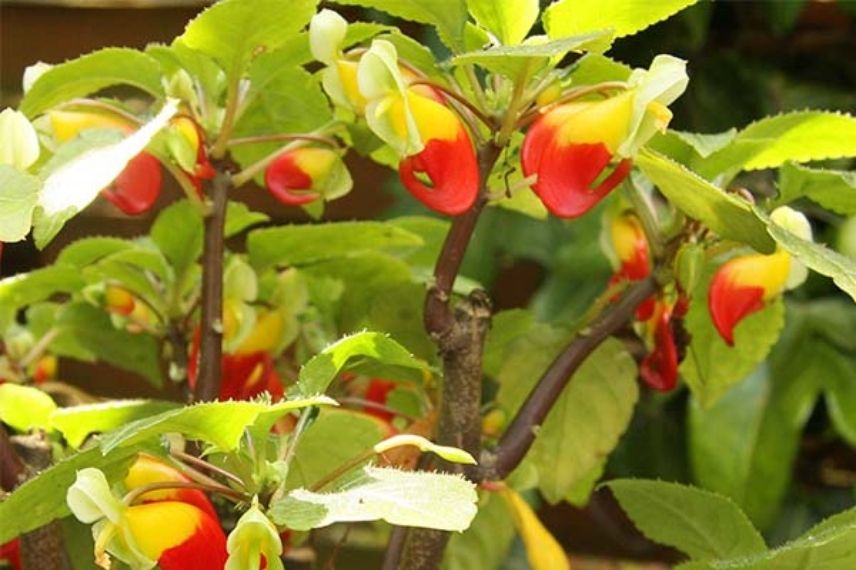
(Photo M. Dumat)
Fuchsia 'Elma-Hendricks' in pastel pink!
Thanks to its semi-trailing habit, Fuchsia x hybrida ‘Elma-Hendricks’ is an ideal annual for pots or hanging baskets. This hybrid variety offers abundant flowering from June until first frosts. The colour of the bell-shaped flower is a candy-pink gradient: the base is darker and the veined sepals and petals then gradually lighten. Long stamens of a much deeper pink emerge. The dark green foliage contrasts well with the pale flowers.
This plant grows in shaded situations, in light, well-aerated and humus-bearing soil, i.e., enriched with humus. Plant this shade-loving flower in the garden preferably in May, after last frosts. It is essential that soil remains moist, but not excessively, as Fuchsia is sensitive to drought. In a pot, Fuchsia ‘Elma-Hendricks’ pairs perfectly with Ivy, Brunneras, Lobelias, Scaevolas or Begonias.
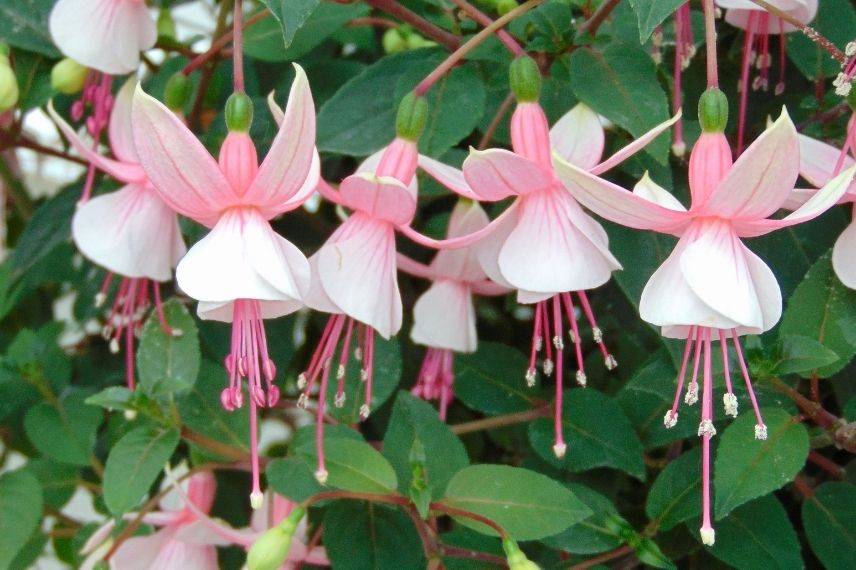
Discover other Annuals
View all →Available in 1 sizes
Available in 1 sizes
Available in 1 sizes
Available in 1 sizes
Available in 1 sizes
Available in 1 sizes
Available in 1 sizes
Available in 1 sizes
Available in 1 sizes
Available in 1 sizes
Begonia 'Belleconia Snow', a cascade of flowers
Begonia ‘Belleconia Snow’ is an annual plant with a trailing habit. It is perfectly suited to hanging baskets, planters or large containers. From June to September, its large double flowers that grow in shade are immaculate white and can reach up to 5 cm in diameter! The ‘Belleconia’ variety also offers other flower colours: yellow, orange and pink. This Begonia is a great choice to brighten a shaded corner of a terrace or balcony. Take care to protect it from direct sun, which can scorch its leaves if exposure is too strong.
This shade-loving flower can be planted from April–May in a well-aerated, free-draining soil because it does not tolerate waterlogged or overly compacted soils. It is therefore important to water it moderately and not to wet foliage. Indeed, its weak point is its susceptibility to powdery mildew and botrytis. Feed regularly during active growth. This Begonia can be paired with fuchsias, impatiens, glechomas or bacopas.
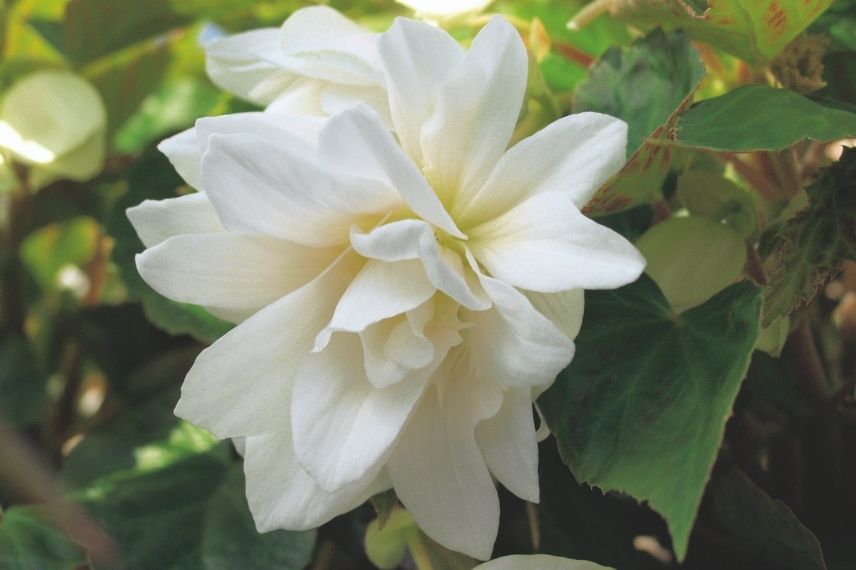
Purple Streptocarpus, light and airy
Native to Africa, the Streptocarpus saxorum ‘Purple’, also called Cape primrose, can be grown in pots indoors or outdoors in partial shade as an annual. Its medium-green leaves have a slight fuzz. Flowering appears on trailing stems. Many small mauve-blue, trumpet-shaped flowers with white centres appear from March to October. Delicate shade plant offering a beautiful display!
Cape primrose is ideal in pots, hanging baskets or window boxes. Planting is recommended in April–May in a light, humus-bearing, non-calcareous soil. It does not tolerate stagnant water, which can encourage botrytis. Also prefer a sheltered position away from wind for this plant, which does not tolerate cold. Often solitary in pots, the Streptocarpus saxorum ‘Purple’ can nevertheless be paired with Lobularias or small-flowered annual Euphorbias.
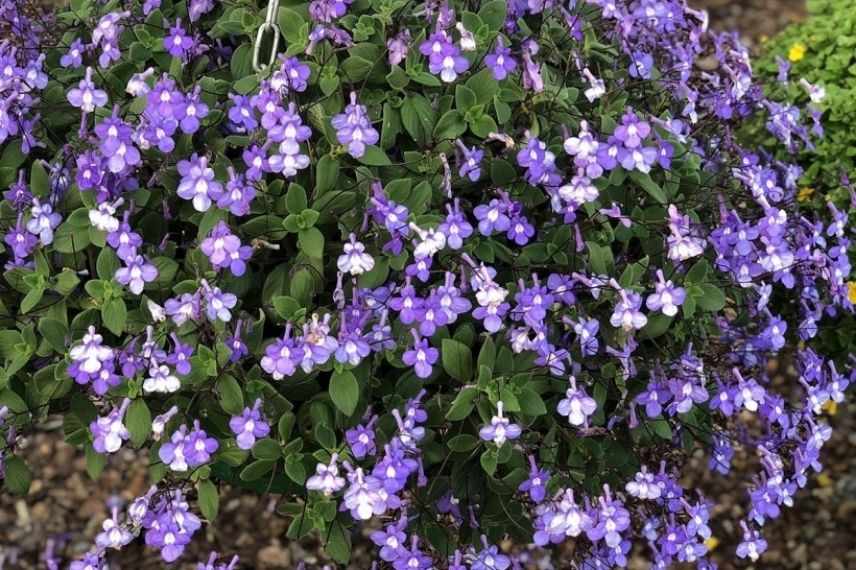
Primrose 'Flamenco Fire': frilly and fiery!
Garden primrose, or Primula vulgaris, is a classic often planted to brighten a shady corner in a border, rockery, understorey, short grass meadow or planter. The variety ‘Flamenco Fire’, wider than tall at ripeness, has broad, thick, crinkled leaves. Flowers of this biennial are striking and original: orange petals edged with yellow that evoke flames! A lovely colour that adds pep. Note that this spring flowering is highly attractive to birds for its sweet nectar.
These shade flowers should be planted from October to November in cool, humus-bearing soil. For use in a planter, the base must be well drained with clay pebbles or gravel to avoid excess moisture and the onset of grey mould. Also provide fertiliser during flowering. For an attractive planter composition, plant Primula vulgaris ‘Flamenco Fire’ alongside Muscari, Narcissi or Pansies.
For more on biennial plants, see our advice sheet: Biennial plants.

Purple foxglove 'Monstrosa' and its surprising flowering
The Digitalis purpurea ‘Monstrosa’ is a perennial, however it is mostly used as an annual in partial shade. Its purple flowering really stands out. The flowering stem, made up of small flowers arranged regularly alongside one another, is topped at its tip by a large broad flower with dentate petals, completely different from the flowers below! The flower spikes, highly melliferous, can reach 1.20 m in height from May to July.
This shade-loving flower should be planted in humus-bearing, fresh, neutral to even acidic soil. It requires little maintenance; if necessary, stake stems in windy conditions. To prevent self-seeding, cut flower spikes after flowering. Digitalis purpurea ‘Monstrosa’ adds volume to borders. For a woodland or shady rockery setting, pair this foxglove with hardy geraniums, hostas, ferns and toad lily.
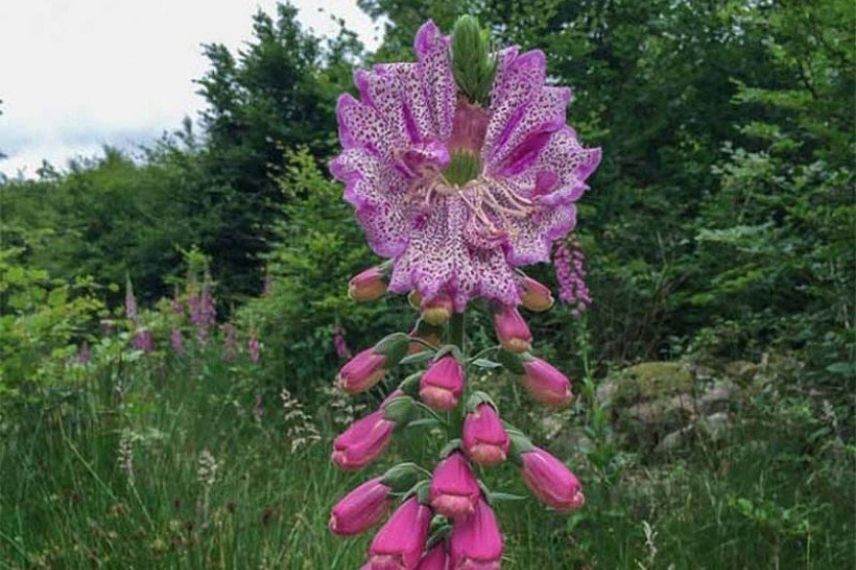
For more information
Discover our tips:
- Subscribe!
- Contents
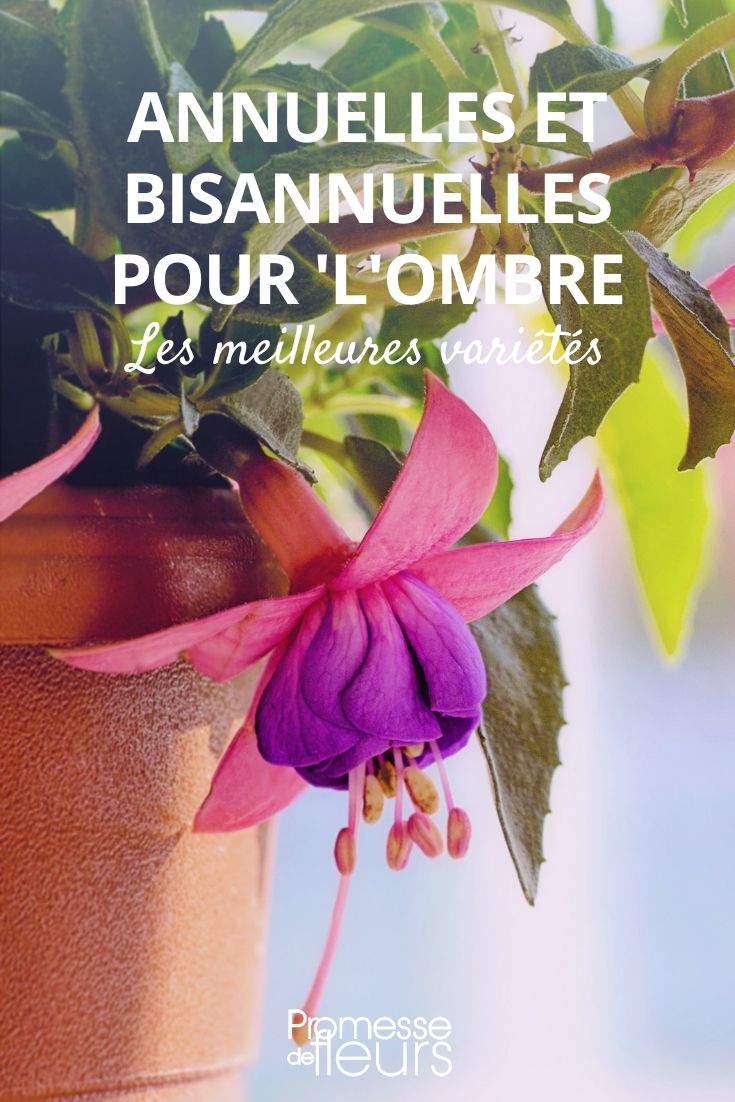































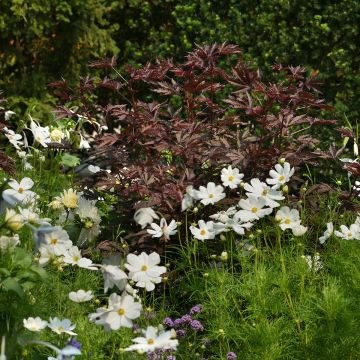
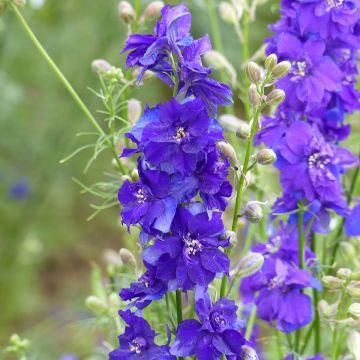


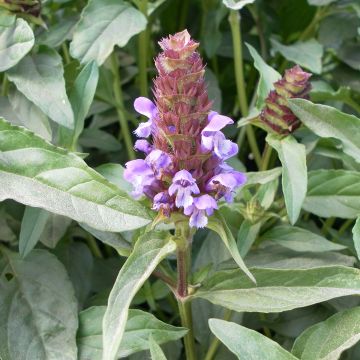
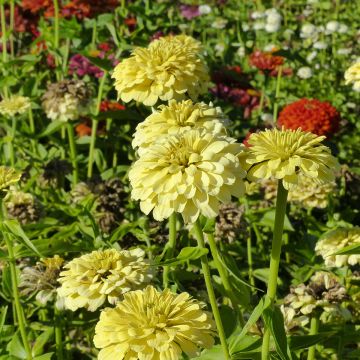
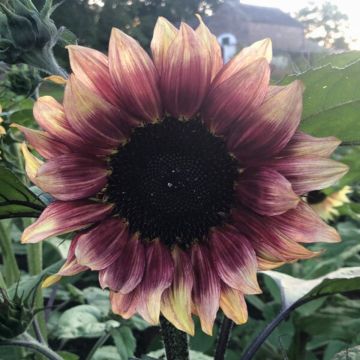
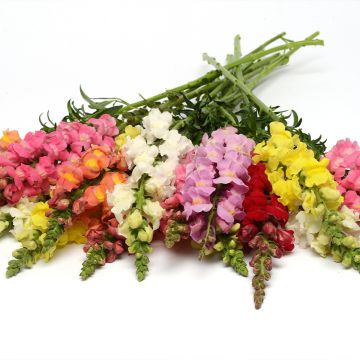
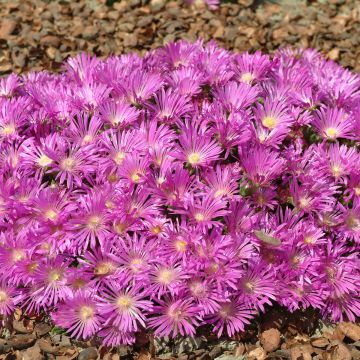
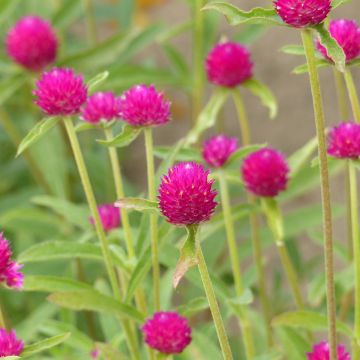
Comments